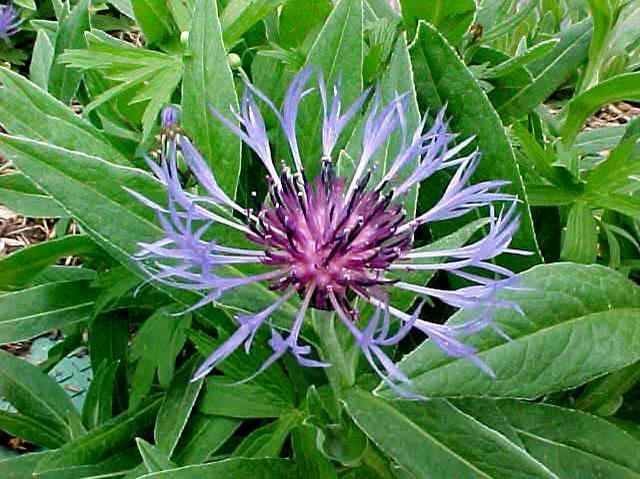Mountain bluet (Centaurea montana)
Mountain bluet
Centaurea montana is an erect, stoloniferous, clump-forming perennial which features solitary, fringed, rich blue cornflowers (2″ diameter) with reddish blue centers and black-edged involucre bracts. Flowers appear in late spring atop unbranched stems typically growing 1-2′ tall. Gray-green, lance-shaped lower leaves to 7″ long. Commonly called mountain bluet, perennial cornflower or perennial bachelor’s button.
Genus name comes from the Greek word kentauros meaning centaur.
Specific epithet means pertaining to mountains.

Easily grown in average, dry to medium moisture, well-drained soils in full sun. Drought tolerant. Tolerant of poor soils. Can spread somewhat rapidly by stolons to form colonies in optimum growing conditions, particularly in rich fertile soils which should be avoided and in cool northern climates where it is more robust. Remove spent flower stalks after bloom. Sparse rebloom in late summer-early fall may occur. Plants need to be divided every 2-3 years.
| Hardiness zone | 3 - 8 |
| Sun light | Full sun |
| Water | Dry to medium |
| Maintenance | Low |
No serious insect or disease problems. Rust, aster yellows, stem rot and mildew are occasional problems.
Best massed in border fronts, cottage gardens or naturalized areas.
| Common name | Mountain bluet |
| Botanical name | Centaurea montana |
| Plant type | Herbaceous perennial |
| Family | Asteraceae |
| Hardiness zone | 3 - 8 |
| Water | Dry to medium |
| Maintenance | Low |
| Flower color | Blue |
| Flowering period | May - June |
| Height | 1 - 2 ft. |
| Width | 1 - 1.50 feet |